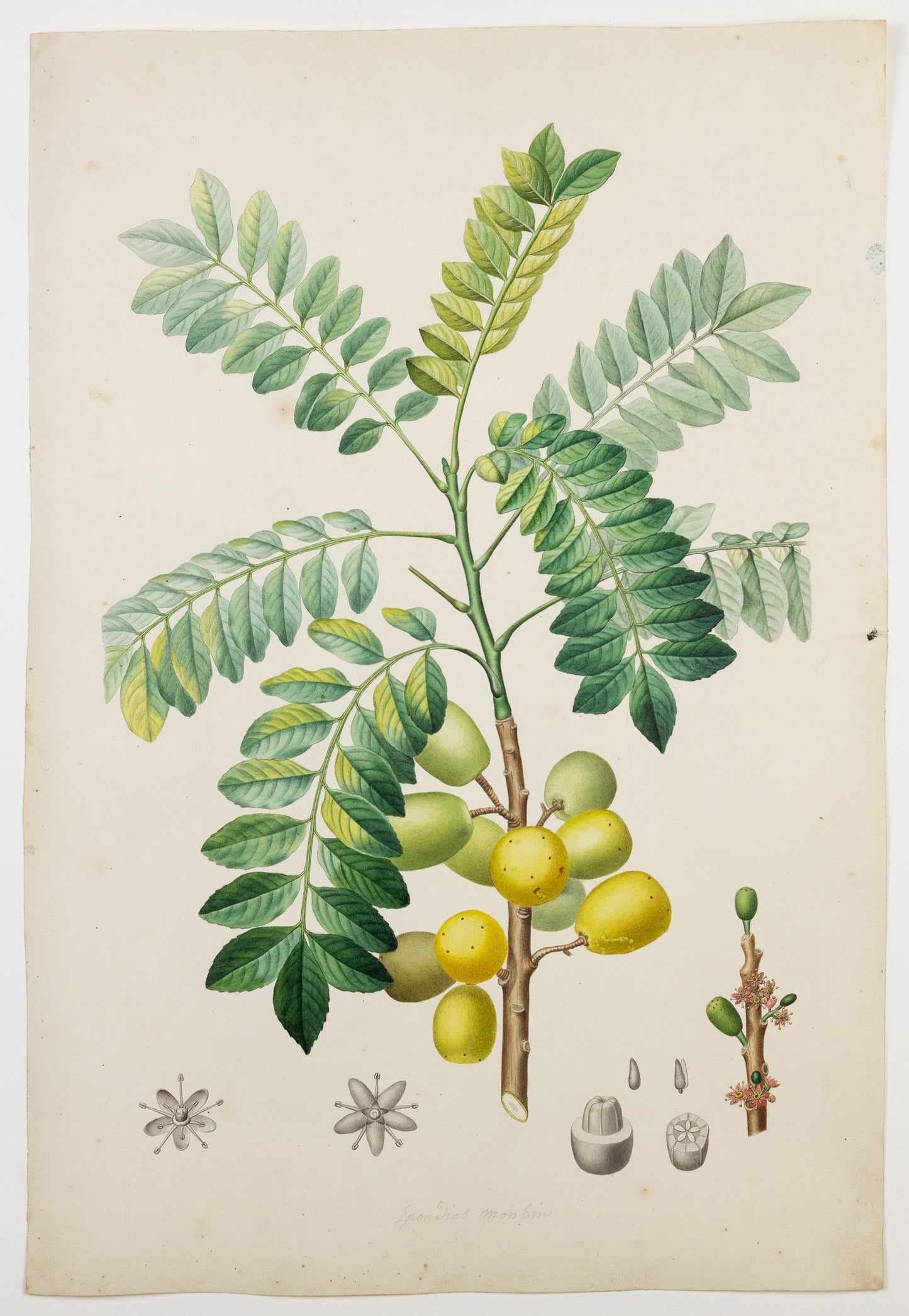PIERRE JEAN FRANÇOIS TURPIN (FRENCH, 1775 – 1840). The Spanish Plumb Tree.
PIERRE JEAN FRANÇOIS TURPIN (FRENCH, 1775 – 1840). The Spanish Plumb Tree.
Couldn't load pickup availability
PIERRE JEAN FRANÇOIS TURPIN (FRENCH, 1775 – 1840)
“Spondias Cirouelia The Spanish Plumb Tree” [Spondias purpurea]
Preparatory drawing for F.R. Tussac, Flore des Antilles, ou histoire générale botanique, rurale et economique des végétaux indigènes des Antilles.
Paris: chez l’auteur, F. Schoell et Hautel, 1808–1827. Vol. 3, Pl. 8
Watercolor and pencil on paper
Paper size:
Spondias purpurea is a species of flowering plant in the cashew family; it is native to tropical regions of the Americas, from Mexico to northern Colombia and the southwest Caribbean Islands. Commonly known as jocote, the name derives from the Nahuatl word xocotl, meaning sour or acidic fruit. Other common names include red mombin, Spanish plum, purple mombin, Jamaica plum, and hog plum. The skin of the fruit is waxy and thin, and the juicy flesh is aromatic with a plum-like flavor that is acid to subacid. The fruit can be eaten fresh or stewed with sugar as a dessert or used to make jam.
Tussac wrote of this plant:
“This tree, which does not usually rise to more than twenty-five to thirty feet, was, it is said, brought from Cartagena to the Antilles, where it has multiplied so much that it can be regarded as native; the branches of which its top is composed extend in such an irregular manner that no two trees of this species are seen whose shape is similar; some of them lengthen considerably and are entirely devoid of branches; a remarkable peculiarity in this species of tree, is that the leaves only appear after the flowers have passed, and the fruits are already a third of their size, and they then fall at the time of the maturity of the fruits, so that at one time, one sees this tree in flowers without having leaves, and at another time, one sees it covered with fruits without leaves. The Creole ladies make a great deal of the cirouelles, they suck the pulp which is a little acidic, with great pleasure; as for the Europeans, this fruit seems very insignificant to them.”

Appeared in F.R. Tussac, Flore des Antilles, ou histoire générale botanique, rurale et economique des végétaux indigènes des Antilles. Paris: chez l’auteur, F. Schoell et Hautel, 1808–1827. Vol. 3, Pl. 8.


